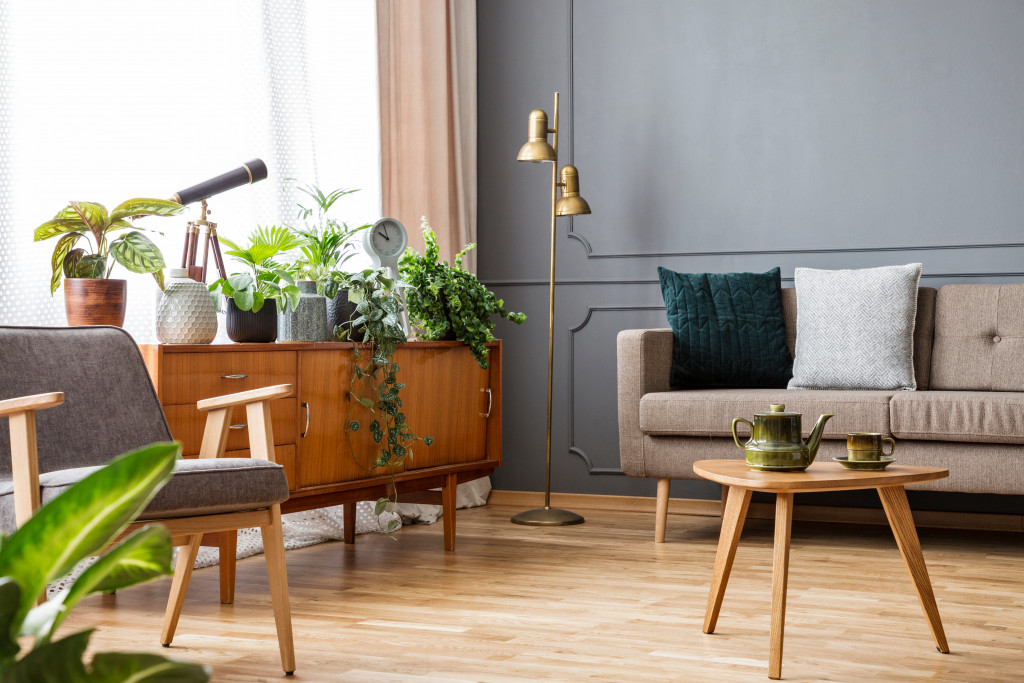Today’s prevailing issue of climate change pushes us toward a more sustainable lifestyle. Thus, we are constantly bombarded by buzzwords. One of those is “biophilic design.” Not to mistake it for bibliophilia (which is the love for literature), biophilia is, simply put, the love for nature. It was popularized by Edward O. Wilson in the 1980s. During that decade, urbanization became popular. The same went for the material greed and excess that are associated with the Reagan years. Wilson was bothered by the continuous increase of migration to urban cities and the growing disconnection with the natural world.
These pressing issues fuel the biophilic design hypothesis. It believes that humans have an innate connection to nature and natural processes. Without that connection, our health could deteriorate.
Maintaining a balanced and consistent relationship with the natural environment will enhance many aspects of our lives. These include our physical and mental health, social interactions, economic situation, productivity, and many others. Here are the reasons investing in landscapers will have the biggest payoff.
Benefits of Biophilic Design
Biophilic design in the spaces we inhabit creates balanced and happy environments. It is as simple as that. Here are some of its key benefits:
- Health. Studies show that the presence of water, especially, the sight and sound of it, lowers blood pressure and heart rate. It also enhances memory restoration and increases feelings of tranquility. Biophilic design also decreases post-operation recovery times by 8.5% and the need for pain medication by 22%.
- Productivity. At an office with a direct connection to nature, there is an 8% increase in productivity and a 13% increase in creativity. There’s also a significant reduction in employee absences. Companies can even save up to about $3,000 per employee per year just by keeping morale up with an office that embodies biophilic design.
- Sales. In hotels with biophilic design, studies show that guests are willing to pay 23% more. In stores, on other hand, customers are willing to pay 8 to 12% more. Then, in real estate, there is a 4 to 5% increase in property prices for homes that are designed to be more open to nature.
Offices with Biophilic Design

Major tech companies have invested billions in the design and construction of their headquarters. They don’t confine themselves in one building. Instead, they occupy acres upon acres of land. They called their headquarters “campuses.” They set up unique workspaces that include gardens, mini forests, and whatnot. Although tech companies are the faces of the urban future, they make sure that we don’t lose our relationship with nature.
Amazon’s office in downtown Seattle has spheres as buildings. Giant globes made of glass and steels. And inside it is a cloud forest with over 40 thousand plants. Not only that–employees could also conduct meetings in a conference room inside the sphere. What’s interesting though is that this conference room is designed to mimic a bird’s nest.
Microsoft’s Redmond Campus is also in the heart of Seattle. The campus has tree houses as workspaces. Employees get to have meetings and/or brainstorming sessions there. These tree houses are equipped with all the necessary technology and equipment.
Google’s Googleplex Campus in Mountain View California is a model of a modern city running on sustainable energy. It has multiple gardens that are supported by a society called, “Master Gardeners of Santa Clara County.” This promotes a horticultural lifestyle in the company’s employees.
Climate Change and COVID-19: Why Biophilic Design Is Relevant Today
Apart from that, buildings with biophilic design also lowers the use of energy. It’s because of the inclination towards natural light and ventilation. It also leads to the diversity of species in the city. Rooftop gardens, parks, and small bodies of water provide shelter and sources of food for several plants, insects, and animals.
With the COVID-19 pandemic, social distancing became everyone’s highest priority. This meant the closing of schools, business establishments, and corporations’ shift to remote working. This creates a negative effect on many individuals, especially those who thrive in daily interaction with friends, classmates, and colleagues. One of the ways to combat this is by spending more time with nature.
With the decrease in travel, the idea of turning to nature for peace and relaxation became less prevalent. And, so, implementing biophilic design in our homes became more popular now more than ever.
The growing popularity of biophilic design is due to people’s desire to turn to nature for peace and relaxation. Many even believe that in order to connect to nature, one must spend a lot of money on a vacation to the beach or to the mountains. But, these days, many of us desire a regular interaction with nature. We hope that the natural environment is integrated into their daily lives at home and at work.

